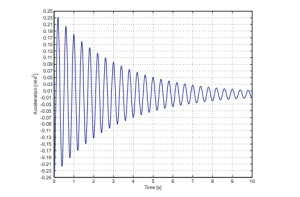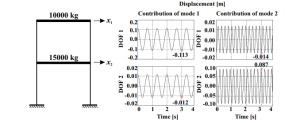- Unit 28 Cloud Computing Assignment : The Application of Cloud Computing to an Organization
- FBU4003 Understanding Principles of Business Assignment Case Study Report
- BUSI12334 Personal and Academic Development Level 4 Assignment 1 Fashion Sustainability Report
- Leadership and Management in Adult Care Assignment Report
- 425Z0087 Quantitative Data Analysis Secondary Data Analysis Semester 1 – Report Assessment Instructions & Information
- Criminology Assignment: Investigating the Representation of Ethnicity in Media Crime Reporting Versus Official Crime Data
- D7115 Technical and Digital Leadership Assignment: A Critical Analysis of Organisational Digital Readiness, Strategic Transformation Planning, and Leadership in Enabling Digital Change
- Level 5 in Leadership and Management in Adult Care – Unit 19 Assignment : Ensuring Health and Safety Compliance and Best Practices in Adult Care Settings
- N1582 Managing Operations Assignment : Enhancing Efficiency through ITO, 4Vs, Capacity Management, and Process Mapping
- MANM376 International Finance Project Assignment: Critical Analysis of Tata Steel, Godrej Properties, and LVMH’s Strategic Financial Decisions
- AB Sugar Company Strategic Management Assignment: External, Internal, SWOT & Sustainable Growth Strategy
- Unit 3 Project Assignment Report: Planning and Delivering a Professional Training Event to Develop IT, Leadership, or Soft Skills
- CIPD 5OS05 Level 5 EDI Strategy Report: Promoting Equality, Diversity and Inclusion in Public Sector Service Organisations
- Water Resources Assignment: HEC-RAS Flow Analysis and Hydraulic Jump Evaluation in Open Channels
- HRM Reflective Assignment 1: Case Study on Strategic Growth & Employee Retention
- Qualifi Level 4 HSC401 Academic Study Skills Assignment: Portfolio on Personal Development, Source Evaluation, and Research Relevance in Health and Social Care
- AFM0ICD Budgeting Advice Assignment 1: Mr Confused Case Study on Business Budget Planning, Monitoring and Communication Using Microsoft Office Tools
- W84512A Enterprise Assignment: Business Analysis of a UK-Based SME Using Market Research, PEST & SWOT Tools BTEC Level1/Level2
- 5COSC022W JAX-RS REST API Assignment: Airline Agency System for Flight, Passenger & Booking Management
- 6315_6327_6220BEUG Construction Project Report: Yale College Redevelopment Programme Management
ECM2201 SDOF & MDOF System Analysis Report
| Subject | ECM2201 Mechanics |
Part 1: SDOF systems (Q1-Q3=10% each; Q4=20%)
1. Three experiments were performed using two cantilever models. The cantilevers are made of the same material and have nominally the same cross section. The available models are sketched in Figure 1. There are spherical masses that can be attached to the cantilevers at any of the dot points denoted on the models (i.e. b, c, d, g or f). The smaller mass m1 is used in the first two experiments, and both masses m1 and m2 are used in the third experiment. Each experiment consists of applying some initial displacement to two cantilevers and leaving them to oscillate freely. Experiments can be observed in video recordings that are available on the module webpage. It should be clear from the video recordings which points were used for attachment of masses in each individual case.
For the experiment assigned to you (see the Assigning the experiments list on the webpage), do the following:
- Describe the experiment briefly (so that it is clear how experiment was done to the person who reads your description in 10 year time, without reading of watching anything else. You can refer to the sketch in Figure 1, or, even better, make your own sketch, as relevant for your experiment.)
- Determine natural frequencies of the two SDOF systems presented in your experiment. Comment on the maximum error you might have made when estimating the frequencies and how this error could potentially be reduced.
- State which of the two systems has higher natural frequency and explain why this is the case. Explain if the frequency you are analysing is damped or undamped.
Do You Need Assignment of This Question

Figure 1: Cantilever models.
2. A SDOF system (k=1233700 N/m, m=5000 kg, ζ = 1%) is exposed to a harmonic force. The force has amplitude of 100 N and a frequency that matches the natural frequency of the system. Sketch the displacement response of the system and calculate its steady-state displacement, velocity and acceleration amplitudes.
3. A free decay response in the fundamental vibration mode (that can be thought of as a SDOF system) of a footbridge was measured, and is shown in Figure 2. Estimate the damping ratio, the undamped and damped natural frequency, and the undamped and damped period for the vibration mode measured. Support your findings with sketches whenever possible.

Figure 2: Free decay.
4. Calculate relevant natural frequencies of two SDOF systems with the following properties – System A: k=1233700 N/m, m=5000 kg, System B: k=71060 N/m, m=5000 kg. Sketch qualitatively by hand the free vibration response of the two systems (under identical non-zero initial conditions of your choice) if the systems are:
- undamped and
- damped (with the damping ratio equal to 5% for both systems).
In both cases ((a) and (b)) calculate the period of the free vibration response and denote it on your graphs. Make sure that the graphs clearly show if the peak amplitude changes with time. For case (b) decide which system will come to the rest first and briefly explain reasoning behind your decision.
Part 2: MDOF systems (Q1=25%; Q2=25%)
1. An undamped two-story shear frame shown in Figure 3 is exposed to some initial conditions. The resulting contributions of the individual vibration modes to the displacement response at each DOF are presented in the same figure. The response values at t=3 s are also shown.

Figure 3: 2DOF shear building and contributions of the individual vibration modes to the response at each DOF.
Buy Answer of This Assessment & Raise Your Grades
Based on this information perform the following:
- Determine natural frequencies for all vibration modes of the building.
- Determine the unity-normalised mode shapes and sketch them.
- Determine modal masses and modal stiffnesses for all vibration modes.
- Sketch the displacement of the building in individual vibration modes at t = 3s. Then sketch the total vibration response of the building at t = 3s.
2. Search the literature to identify an example of a structure (other than the Millennium Bridge in London) that has been reported to be ‘lively’ in at least two vibration modes under some form of dynamic excitation.
Then do the following:
- Summarise the available information about dynamic properties of the structure (i.e. its relevant vibration modes) and excitation that caused the responsiveness of the vibration modes.
- Provide your opinion about the reasons the given excitation was critical for the structure.
- Provide your recommendation how to prevent similar problems happening in the future on similar structures.
Make sure to provide the reference source(s) for your case study. However, do not rely on the reader to check the reference(s) to understand points you make; instead make sure to provide self-contained information about the case study in your report. Note that ‘lively’ implies some degree of problematic behaviour, e.g. vibrations being more noticeable at least by some structure users than initially anticipated, or structure being deemed not fit for purpose, and similar. (You can use maximum one page for this question. It would be preferable to include sketches/photos to accompany your textual information, whenever possible.)
General notes on your submission
Submission should be done electronically, via eBART. Deadline for submissions is 7 November 2022.
The coursework submission should be neatly hand-written. Include sketches whenever possible.
Make sure the letter size is similar to 12pt; otherwise I might not read the content of smaller size!
Leave some empty margins on all four sides – I do not expect you to measure them precisely in a hand-written report, but I do expect you to try to make them around 2cm or more.
The number of pages for the SDOF part should not exceed 6. The number of pages for the MDOF part should not exceed 4 (keeping in mind that you can use maximum one page for Q2).
The only content you are free to type if you wish is your answer to MDOF Q2.
Do not make text too dense – use common sense. If you (or your work colleagues) consider text too dense to read assuming it was written by a third party, then it is likely it will be judged too dense by me too!
Do not include title page, list of contents, and similar. Start the report straight away by answering questions. You could, but are not required, to copy the questions into the report.
Include page numbers. This is a good practice, and should always be followed. It allows referring to specific pages later in the report, if/when required, as well as when marking the report.
Are You Looking for Answer of This Assignment or Essay
If you are facing difficulty with the ECM2201 Mechanics Assignment Report, you have come to the right place. Our experts provide a specially designed assignment help service for students. We are here to provide a free assignment answer list written by experts for students, which you can read to increase your study efficiency. Hurry up and get your mechanics report with high quality and AI-free before the deadline.




